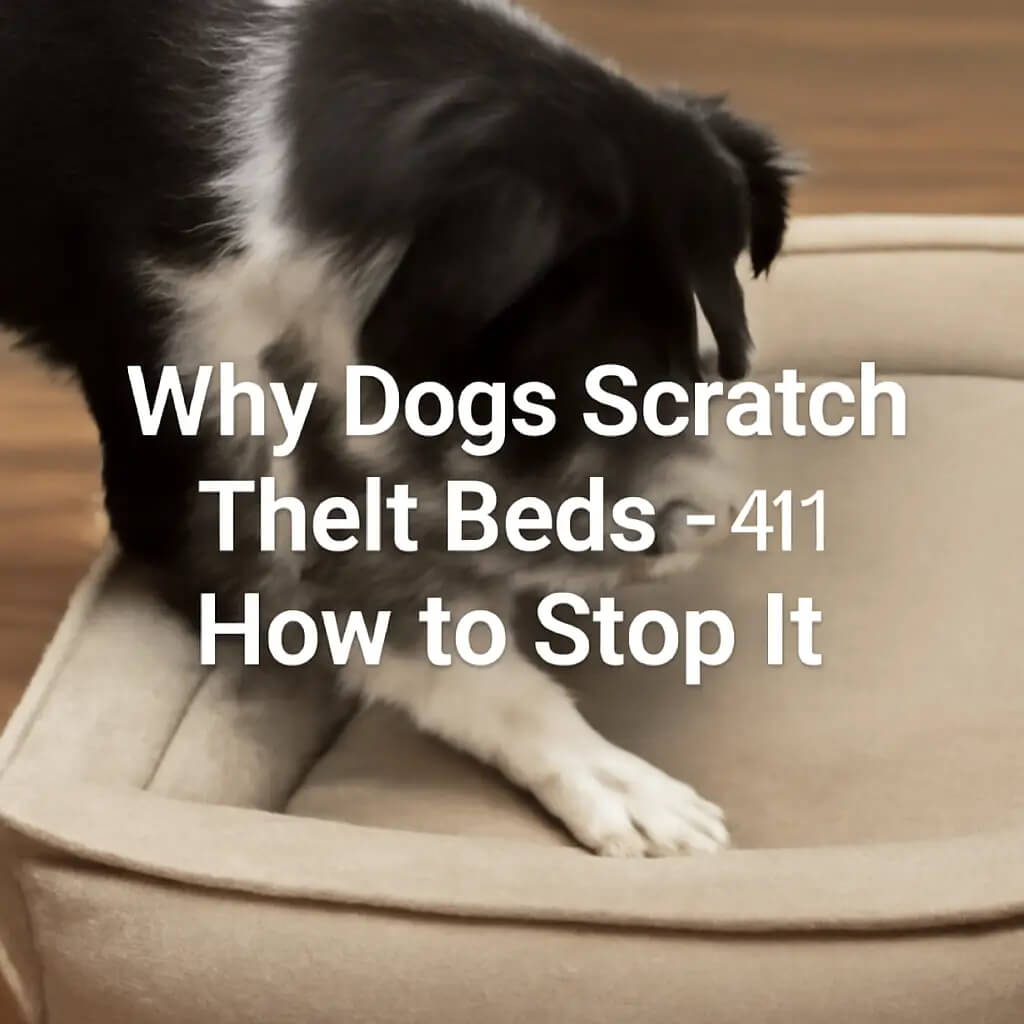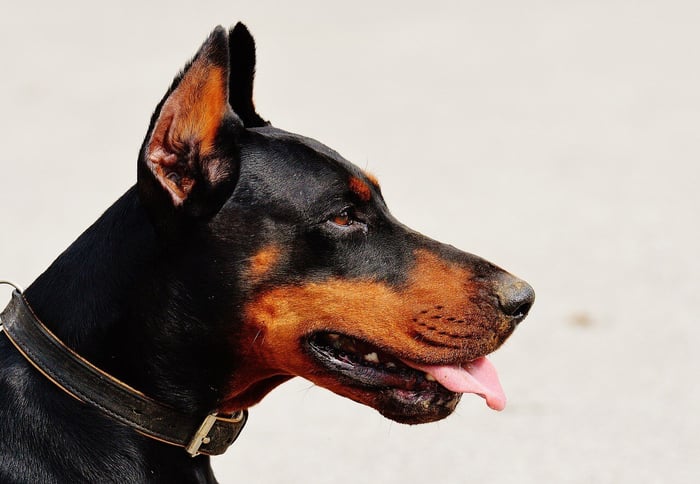Have you ever noticed how your dog loves belly rubs? The moment you start rubbing their belly, they enter a state of pure bliss – tails wagging, legs kicking, and eyes filled with joy. But why do dogs love belly rubs so much? Let’s dive into the science behind this favorite activity and explore why most dogs enjoy a good belly rub, and how it builds trust and happiness.
Why Do Dogs Expose Their Belly?
When dogs roll over and expose their belly, it’s often a signal of trust and relaxation, showing how much they feel safe around you. A dog's belly is one of its most vulnerable areas, and many dogs only reveal it to people or pets they deeply trust. This display is not just about asking for a belly rub—it’s a fascinating part of a dog’s body language.
For most dogs, rolling over is their way of showing comfort and openness. However, not all dogs expose their bellies for the same reason. Some may display this behavior as a sign of submission or nervousness. Recognizing your dog's body language helps you understand whether your pup is inviting a good belly rub or simply seeking reassurance.
Trust and Relaxation in Dogs
When a dog shows their belly, it’s a sign they feel relaxed and secure. In fact, when your pooch stretches out with a wagging tail and soft eyes, they’re saying they trust you completely. For many dogs, this gesture is an invitation for a tummy rub, which makes them feel pretty good by stimulating sensitive nerves in their spinal cord and hair follicles.
Different Reasons for Belly Exposure
Seeking Affection: Dogs love belly rubs when they feel safe and loved. Rolling over for a great belly rub is their way of asking for attention in a way that brings them physical and emotional comfort.
Submission: For some dogs, showing their belly is a submissive gesture, especially in new or uncertain situations. This isn’t always an invitation for a rub, so it’s important to read your dog's body language.
Scratch Reflex Fun: A belly rub can trigger the famous scratch reflex, where a dog kicks their legs in delight. This reflex, linked to their spinal cord, indicates that they’re enjoying the gentle scratches.
How to Recognize When a Dog Enjoys Belly Rubs
A happy dog will wag their tail, keep their body loose, and often stick their tongue out in contentment. However, if a dog seems tense, stops wagging their tail, or tries to move away, it’s a clear sign they might not be in the mood for belly rubs.
By understanding why dogs roll onto their backs and exposing their bellies, you can build trust and give your furry friend the affection they crave. Whether it’s a gentle scratch or a great belly rub, paying attention to your dog’s reactions ensures a positive and bonding experience for both of you.
The Science Behind Belly Rubs
Ever wondered what makes belly rubs so enjoyable for dogs? Let's quickly delve into the science behind this delightful gesture.
Why the Belly Matters
A dog's belly is full of sensitive nerves. When you rub this area, it sends feel-good signals to their brain. This triggers a release of endorphins and oxytocin, much like the happiness hormones in humans. For dogs, this is not just a physical pleasure but also an emotional one, enhancing their bond with you.
Trust in Every Rub
Offering their belly for a rub is a sign of trust from your dog. It's their method of expressing that they feel secure and cared for in your presence. Remember, each dog is unique. While some adore belly rubs, others might prefer different forms of affection. It is crucial to comprehend and honor the preferences and aversions of your canine companion.
How to Give Your Dog the Best Belly Rub
Now that you know why dogs love belly rubs, let’s talk about how to give a great belly rub that your dog will love. Every dog is different, so learning to read your dog's cues is important.
Wait for the Invitation: Your dog will often signal when they want a belly rub by rolling over and exposing their belly. Look for other signs of relaxation, like a wagging tail or soft, happy eyes.
Start with Gentle Scratches: Begin with soft strokes or gentle scratches. Dogs have sensitive skin and nerve endings, so a light touch works best.
Watch for Positive Reactions: If your dog kicks their legs in delight or wags their tail, you’re doing it right! This is often referred to as the scratch reflex and is a sign that your dog enjoys the belly rub.
Knowing When to Stop
Watch for Signs: If your dog starts to look uneasy, stops wagging its tail, or tries to move away, it's time to stop.
Respect Their Space: Always respect your dog's personal space and boundaries. If they're not in the mood for a belly rub, give them some space.
Every Dog is Different
Remember, each dog has its own preferences. Some may love long belly rub sessions, while others might prefer a quick scratch. To gain insight into your dog's preferences it's essential to observe their reactions and understand what brings them the joy.
The Importance of Touch and Affection
While plenty of dogs enjoy rubbings with glee, not every furry friend finds this gesture appealing! It's crucial to be mindful of the tell-tale cues that indicate your canine companion isn’t in the mood for a belly rub to prevent any discomfort and potential stress for them. This is especially important when they are lounging comfortably on their dog sofa bed, where they may prefer resting undisturbed.
When your dog moves away or dodges your touch, it indicates that they are not up for a belly rub at that moment. Respecting their space, even when they are lying on their cozy dog sofa bed, can help build trust and maintain their comfort.
When a dog tenses up or stiffens its body muscles and becomes rigid, rather than loose and wiggly like when relaxed, it’s a sign to take a break and give them some space.
Lying on their back, with a tucked tail and ears laid back might suggest submission or nervousness than a signal, for a belly rub.
Growling or baring their teeth are indications of unease or a cautionary signal. Yawning or licking their lips may be signals of anxiety or stress, similar to how humans experience discomfort.
When your dog tries to stand up or go elsewhere in the vicinity, it’s a clear idea to give them their space and allow them to move away, especially if they’re on their dog sofa bed and want to be left alone.
If you see any of these signs in your dog's behavior when you're petting them on the belly—like if they flinch away—it’s important to respect their boundaries and not push them to accept a belly rub if they’re not comfortable with it. Remember that every dog is different; some may not actually like belly rubs, and that's totally fine!
Large Washable Fluffy Orthopedic Soft Dog Pillow Dog Sofa Bed-Snoozy Dream

$78.99
Snoozing When it comes to turning your living room into the ultimate relaxation space for your beloved pet, finding a couch that offers the right level of comfort is key. FUNNYFUZZY Snnozy Dream has a comfortable balance of firmness and… read more
Dog’s Belly Care and Hygiene
Maintaining proper hygiene for your dog's belly is crucial to prevent skin problems and infections. Regularly check for signs of irritation, such as redness or discharge, as early detection can help prevent more serious issues. When bathing your dog, use lukewarm water and dog-specific shampoo to gently remove dirt and germs without causing discomfort. Be sure to dry the belly thoroughly after baths or swims to avoid moisture buildup, which can lead to skin issues. Additionally, trimming the belly fur helps prevent tangles and mats that can cause discomfort. Always use products designed for dogs, avoiding harsh soaps or chemicals that may irritate their sensitive skin. Following these tips will keep your dog's belly healthy and free of skin problems.
What to Do if Your Dog Doesn’t Enjoy Belly Rubs
If your dog doesn’t enjoy belly rubs, there are still many other ways to show them affection and provide them with a sense of comfort and security. Here are some alternatives:
Try petting them on the head, chest, or back instead: These areas might be more comfortable for your dog.
Give them a gentle massage or scratch behind the ears: These can be soothing and enjoyable for your dog.
Play with them or engage in interactive games: Activities like fetch or hide-and-seek can be great for bonding.
Provide them with treats and praise: Positive reinforcement can make your dog feel loved and appreciated.
Simply spend quality time with them: Sometimes, just being near your dog and giving them your attention is enough.
Remember, every dog is different, and what works for one dog may not work for another. It’s essential to get to know your dog’s individual preferences and personality to show them affection in a way that they enjoy.
If your dog is consistently showing signs of discomfort or stress when you try to give them a belly rub, it’s best to consult with a veterinarian or a professional dog trainer to rule out any underlying medical issues or behavioral problems.
The Benefits of Belly Rubs for Dogs
While most dogs enjoy belly rubs simply for the joy they bring, there are also several health and emotional benefits that come with this affectionate act.
Strengthens the Bond: Giving your dog regular belly rubs builds trust and enhances the emotional connection between you and your pup. It's a sign that your dog feels safe and loved.
Promotes Relaxation: A gentle belly rub can help relieve stress and make your dog feel more relaxed. Many dogs tend to feel calm and happy during a good belly rub, thanks to the release of endorphins.
Health Check: Regular belly rubs provide an excellent opportunity to check your dog’s skin and belly area for any unusual signs like lumps, rashes, or parasites. Catching these early can help prevent health issues.
Conclusion: Why Belly Rubs Make for a Happy Dog
In summary, dogs enjoy belly rubs because they stimulate nerves that release feel-good chemicals in the brain, creating both physical and emotional pleasure. Belly rubs not only make your dog feel happy and relaxed but also strengthen the bond of trust between you and your furry friend.
However, it’s important to respect your dog's body language and know when they’ve had enough. With the right approach, you can give your dog the best belly rub they’ve ever had, leaving them feeling safe, loved, and cared for.












